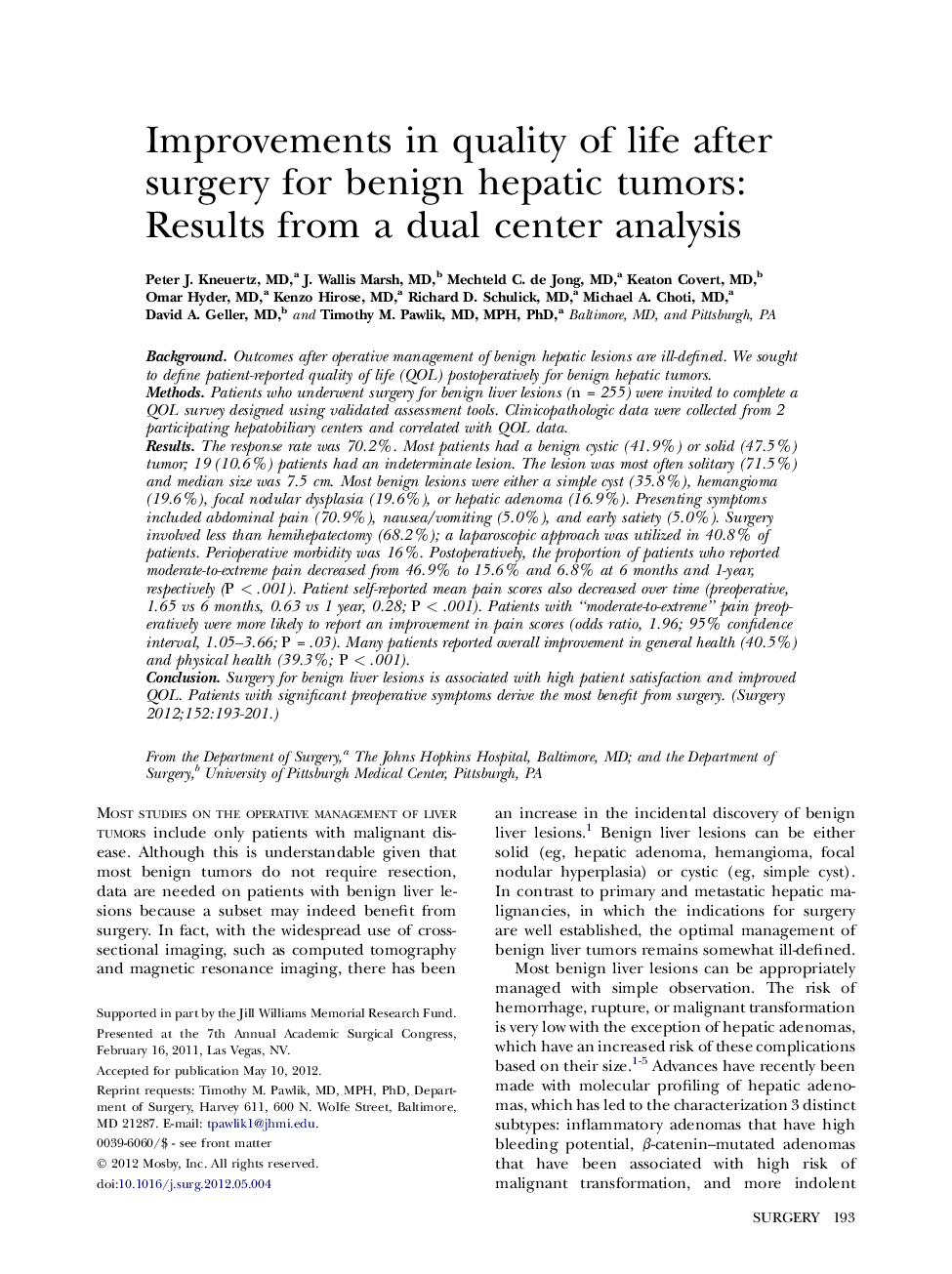| Article ID | Journal | Published Year | Pages | File Type |
|---|---|---|---|---|
| 4308283 | Surgery | 2012 | 9 Pages |
BackgroundOutcomes after operative management of benign hepatic lesions are ill-defined. We sought to define patient-reported quality of life (QOL) postoperatively for benign hepatic tumors.MethodsPatients who underwent surgery for benign liver lesions (n = 255) were invited to complete a QOL survey designed using validated assessment tools. Clinicopathologic data were collected from 2 participating hepatobiliary centers and correlated with QOL data.ResultsThe response rate was 70.2%. Most patients had a benign cystic (41.9%) or solid (47.5%) tumor; 19 (10.6%) patients had an indeterminate lesion. The lesion was most often solitary (71.5%) and median size was 7.5 cm. Most benign lesions were either a simple cyst (35.8%), hemangioma (19.6%), focal nodular dysplasia (19.6%), or hepatic adenoma (16.9%). Presenting symptoms included abdominal pain (70.9%), nausea/vomiting (5.0%), and early satiety (5.0%). Surgery involved less than hemihepatectomy (68.2%); a laparoscopic approach was utilized in 40.8% of patients. Perioperative morbidity was 16%. Postoperatively, the proportion of patients who reported moderate-to-extreme pain decreased from 46.9% to 15.6% and 6.8% at 6 months and 1-year, respectively (P < .001). Patient self-reported mean pain scores also decreased over time (preoperative, 1.65 vs 6 months, 0.63 vs 1 year, 0.28; P < .001). Patients with “moderate-to-extreme” pain preoperatively were more likely to report an improvement in pain scores (odds ratio, 1.96; 95% confidence interval, 1.05–3.66; P = .03). Many patients reported overall improvement in general health (40.5%) and physical health (39.3%; P < .001).ConclusionSurgery for benign liver lesions is associated with high patient satisfaction and improved QOL. Patients with significant preoperative symptoms derive the most benefit from surgery.
